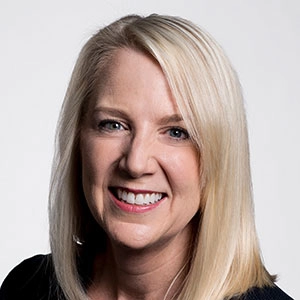How much equity exposure is too much in retirement?
Retirees require stocks' growth potential, but they need a cash and bond buffer, too.
Susan Dziubinski: Hi, I'm Susan Dziubinski with Morningstar. Given today's meager yields on fixed income and cash instruments, some retirees may be wondering if they should just go all-in on stocks. Joining me today to talk about how retirees can think about rightsizing their equity allocations is Christine Benz. Christine is Morningstar's director of personal finance.
Hi, Christine. Thank you for being here today.
Christine Benz: Hi, Susan. It's great to be here.
Dziubinski: Let's start out with the idea that you do think in general it's a good idea for retirees to have exposure to stocks, and why is that?
Benz: Absolutely. If I look at my model portfolios, even the conservative ones have like 40 per cent in equities, and the key reason is that retirees absolutely need growth potential. Retirement for many of us will be a 25- or 30-year or even longer time period. So, you absolutely need to make sure that your portfolio grows, that it beats inflation. And the other reason that you want to have stocks in your portfolio is, as you said Susan, yields are so low today and that in turn means that the return potential on safer investments is also really quite low. Yields are quite neatly correlated with future returns over the next decade. Right now, you're really lucky to earn a return of 1.5 per cent on a diversified bond portfolio. So, most retirees can't afford to live with that very low return potential. They need the higher return potential that comes along with stocks and they need to make peace with having the volatility that comes along with stocks.
Dziubinski: Now, there is such a thing as overdoing it with stocks in retirement. What are the risks of an all-equity portfolio once you're retired?
Benz: The big risk is that if you don't have any buffer assets in your portfolios, if you don't have any cash or bonds in your portfolio, the risk is that you might encounter some big equity market drawdown, and certainly we have had several over the past couple of decades where stocks lose a lot, and your choices then will be to withdraw from that portfolio. And if you do so, if you're withdrawing from your portfolio, from your equity portfolio as it's declining, that leaves less of the portfolio in place to recover when stocks eventually do. So, it's suboptimal to go all-in on stocks. You should ideally have some components of your portfolio that will hold their ground, may even gain a little bit of value in periods of stock market weakness.
Dziubinski: How can retirees go about figuring out how much stock exposure is the right amount so that they're not derailing their longer-term plans?
Benz: I really like the idea of using their spending horizon, their near-term spending needs to drive how much they hold in safer investments and then, in turn, back into how much to hold in stocks. So, if a retiree is actively drawing upon his or her portfolio, I like the idea of having eight to 10 years' worth of anticipated portfolio withdrawals in cash, in bonds. So, in my model portfolios I typically have two years set aside in cash investments, very low return potential there, but you are able to definitely preserve your purchasing power. Then, with money that retirees might expect to spend in the next, say, five to eight years after that, there they can reasonably hold a high-quality fixed-income portfolio. And then the amount that's leftover is an amount that they can safely have in stocks. And the reason I arrive at that 10 years' worth of spending in safer investments is that we have had these periods where stocks have had kind of a lost decade where they've gone down and stayed down for an extended period of time. The idea of having those more liquid assets set aside is that you could cover yourself. You could cover your spending needs through that period of market weakness.
Dziubinski: Many retirees, including many of our readers on Morningstar.com, are big fans of dividend-paying stocks, and they will use the dividends that these stocks pay to cover their income needs. So, if a retiree has their income needs covered by the dividends on these stocks, how do you feel about them holding, say, an all-dividend stock portfolio? What are the risks there?
Benz: Well, I love the idea of retirees incorporating dividends into their portfolios. I think there is a risk of having an all-equity portfolio, even if it is composed of high-quality dividend payers. And the big one, which was one that we really saw in stark relief during the financial crisis of 2008, was that sometimes some of the biggest dividend payers are forced to slash their dividends in periods of market weakness, in periods of broad economic weakness. So, the risk for a retiree who's subsisting strictly on dividends, who doesn't have any buffer assets in the portfolio, is that those companies that they're relying upon do make dividend cuts, and the retiree is forced to make do on less or forced to resort to some other strategy that's suboptimal. I think that even dedicated dividend payers probably want to have at least something set aside in safer assets to tide them through a situation like that.
Dziubinski: Well, Christine, thank you so much for your time today. I think there's been a lot of good information here about why we all do sort of need that buffer in retirement.
Benz: Thank you so much, Susan.
Dziubinski: I'm Susan Dziubinski with Morningstar. Thank you for tuning in.


